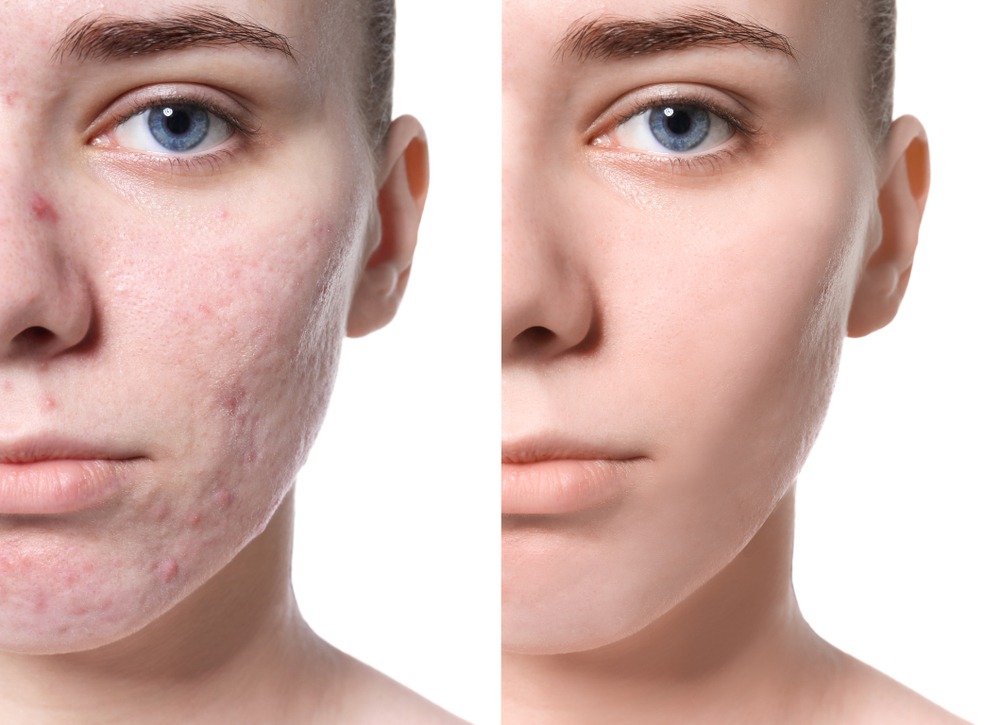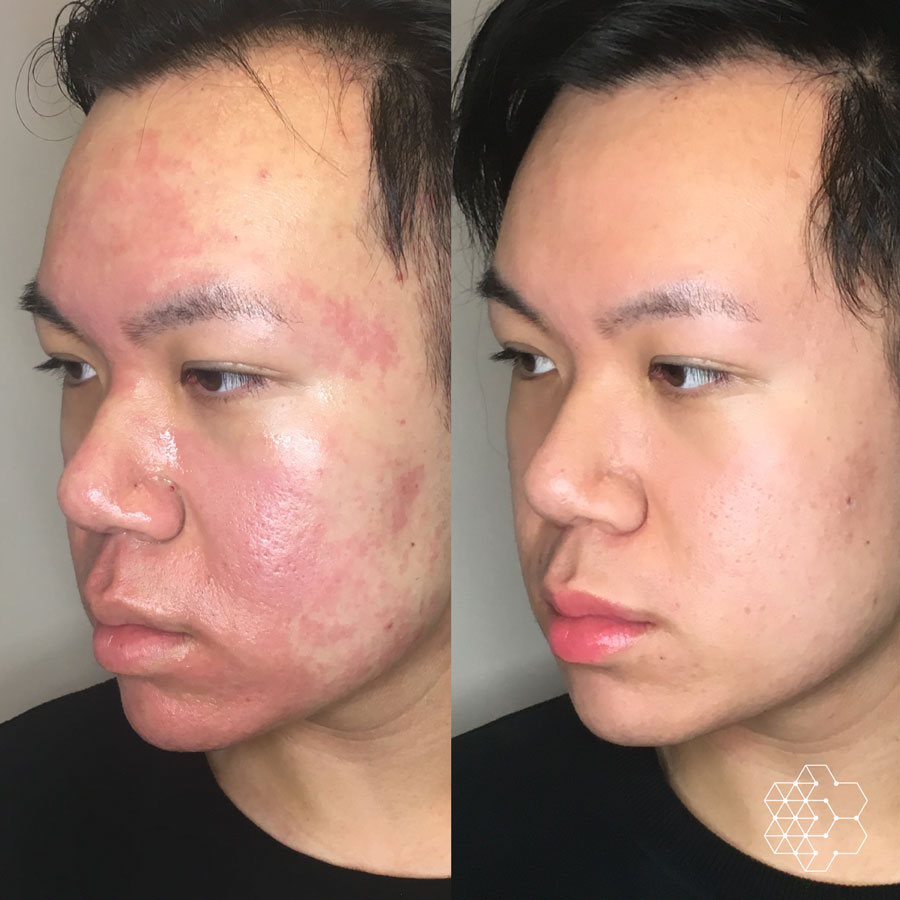Top Acne Treatment for Sensitive Skin: Gentle Solutions for Clear Skin
Discovering Skin Disease: Dealing With and determining Acne Scars for Healthier Skin
Acne scars stand for a significant concern for people looking for to preserve healthy and balanced skin, as they can affect both appearance and self-esteem. Recognizing the numerous kinds of marks, from atrophic to hypertrophic, is crucial for figuring out suitable therapy options.
Comprehending Acne Marks

The body's all-natural recovery procedure can result in either atrophic marks, which look like clinical depressions in the skin, or hypertrophic scars, which are raised and result from overproduction of collagen. In addition, the emotional toll of acne marks ought to not be taken too lightly; many individuals report feelings of embarrassment, stress and anxiety, and reduced self-worth. This psychological concern can affect social communications and total lifestyle.
Dealing with acne scars requires a detailed understanding of their formation and effect. Understanding of the possibility for long-term effects linked with without treatment scars can encourage individuals to look for proper treatments. Early intervention and effective administration strategies can dramatically boost skin look and improve emotional resilience, emphasizing the relevance of understanding the complexities surrounding acne marks.
Kinds Of Acne Scars
Acne marks can be classified into distinctive kinds, each showing distinct features and calling for details therapy approaches. acne scars treatment. The primary kinds of acne scars include atrophic, hypertrophic, and keloid scars

Hypertrophic marks, in comparison, are increased over the skin degree and are the result of excessive collagen manufacturing during the recovery process. They normally remain within the borders of the original acne sore. Keloid marks are comparable but expand past the original injury site, creating bigger, raised locations that can be uncomfortable or itchy.
Understanding these sorts of scars is important for picking ideal treatment alternatives. Different scars may react far better to specific therapies, such as laser treatments, fillers, or medical treatments, highlighting the significance of a tailored method to acne mark monitoring.
Identifying Your Marks
Acne marks normally drop right into two categories: hypertrophic and atrophic scars. These can better be identified useful site into ice-pick scars, boxcar marks, and rolling scars, each displaying distinctive attributes and calling for various strategies for analysis.
Hypertrophic marks, on the various other hand, are raised and happen because of extreme collagen production during the recovery process. Identifying the details attributes of your scars-- such as texture, depth, and width-- is important for correct identification (acne and acne scars treatment). Additionally, take into consideration the distribution of marks throughout your skin, as this can indicate the intensity and duration of the acne problem
Involving with a skin doctor can provide valuable understandings right into the nature of your scars, assisting in the distinction between numerous types. A detailed understanding of your marks will eventually cause a much more tailored and effective treatment strategy, making certain a more clear and healthier complexion.
Therapy Alternatives Readily Available
Identifying the details sort of acne scars existing on your skin prepares for checking out reliable treatment alternatives. Common sorts of acne marks include atrophic (clinically depressed), hypertrophic (elevated), and post-inflammatory erythema.
For atrophic scars, options such as chemical peels, microneedling, and laser resurfacing are commonly used. Chemical peels off make use of acids to get rid of the external layer of skin, advertising brand-new cell development.
Hypertrophic marks can be treated with corticosteroid injections to flatten the scar or laser treatment to decrease soreness and boost look. Silicone gel sheets and pressure dressings may likewise help in taking care of raised scars.
On top of that, dermal fillers can momentarily complete clinical depressions from atrophic marks, while surgical excision may be proper for serious situations. Each therapy option has its benefits and factors to consider, making it necessary to seek advice from a skin specialist. They can give individualized suggestions based upon the kind and seriousness of your marks, along with your skin over at this website kind and overall health.
Tips for Prevention
Efficient prevention methods can considerably minimize the possibility of establishing acne scars. Utilizing non-comedogenic items assists stop stopped up pores, which can intensify acne.
Avoiding need to pop or pick acne lesions is crucial, as this can result in deeper skin damage and visit homepage raise the threat of scarring. Rather, think about utilizing a cold compress or over the counter treatments to minimize swelling and soreness.
Sunlight security is another important aspect of prevention; ultraviolet (UV) rays can darken marks and impede the healing procedure. Using a broad-spectrum sunscreen with a minimum of SPF 30 daily can secure the skin and advertise also healing.
Finally, maintaining a balanced diet regimen abundant in anti-oxidants, vitamins, and minerals sustains skin wellness and recovery. Staying moisturized and handling stress levels can also play a substantial function in reducing acne flare-ups. By applying these strategies, people can dramatically lessen their chances of developing acne scars.
Conclusion
Finally, understanding and identifying acne scars is necessary for reliable therapy and attaining much healthier skin. Numerous kinds of acne scars, including atrophic and hypertrophic marks, necessitate specific treatments tailored to individual needs. Therapy alternatives range from chemical peels and microneedling to corticosteroid shots, highlighting the value of seeking advice from a dermatologist. Furthermore, embracing a mild skincare routine and protecting the skin from UV direct exposure can substantially add to the avoidance of additional scarring and general skin health and wellness.
The body's all-natural healing process can result in either atrophic marks, which show up as depressions in the skin, or hypertrophic marks, which are elevated and result from overflow of collagen. They are further split into 3 subtypes: ice choice scars, boxcar scars, and rolling scars. Acne marks generally drop right into 2 groups: atrophic and hypertrophic marks. These can better be identified right into ice-pick marks, boxcar scars, and rolling marks, each showing distinctive features and needing various approaches for evaluation.
Numerous kinds of acne scars, including hypertrophic and atrophic scars, require specific interventions customized to individual requirements.